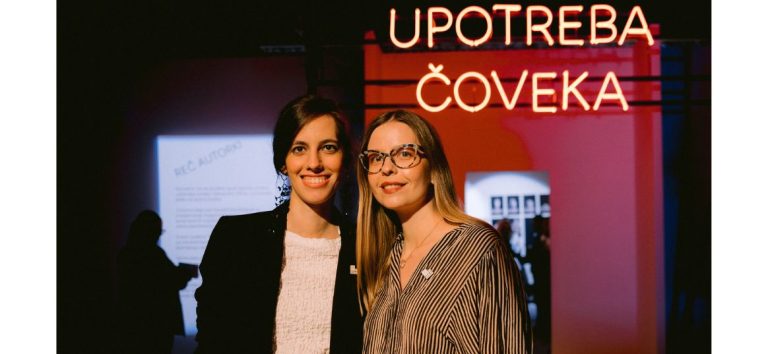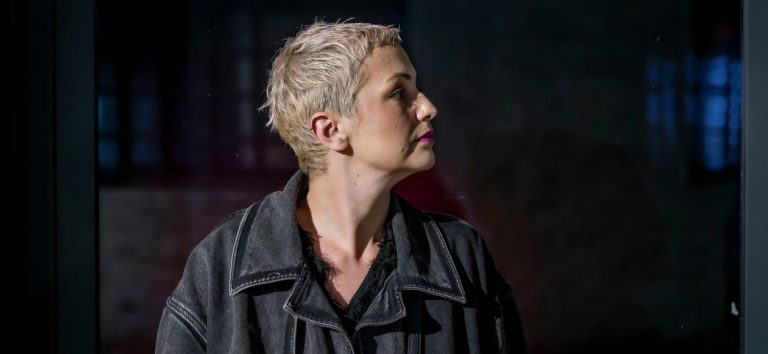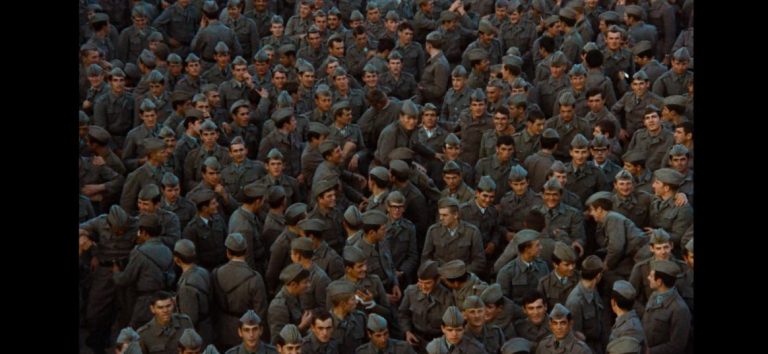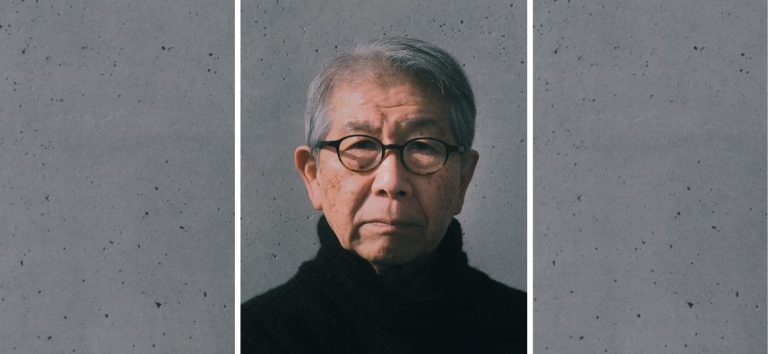Novi Sad District has become a meeting point of the independent cultural scene and cultural institutions. From 1 March this year, the unique centre of artistic creativity will become the home of the Association of Collective Art Practice (SKUP), which aims to engage in art with mutual cooperation and exchange of resources, knowledge and skills of various organizations and groups. SKUP will start its work with a donor auction in Atelje 61, which has given part of its premises to the newly formed association. Visitors will have the opportunity to buy the works of established artists, as well as those who are at the beginning of their careers.
SKUP consists of Šok Zadruga, Grafička Mreža, ReAktor, Iskra, Alliance of Feminist Organizations – SFO Rekonekcija and others. We learned more about the association and the donor auction from Željko Grulović, executive producer of SKUP.
The opening of the SKUP premises and the donor auction will be held in the District on 1 March. What awaits visitors at the opening?
Apart from the donor auction, which is itself a kind of performance – an active participatory installation, visitors can expect a collective pop up exhibition of selected works. Furthermore, it is an opportunity to get to know future programmes, organizations and artists who will reside and create in the space. And last but not least, visitors can enjoy a drink and an opportunity to meet some new people.
At the auction, we will have the opportunity, perhaps for the first time, to see and bid for some of the works of art by both already known and established artists, as well as those artists who are at the beginning of their careers. How were the works for the auction chosen?
Artworks are donated by the artists themselves as well as from private collections. What connects all the works is that they belong to members and friends, or are the property of Šok Zadruga itself. The idea is that collected funds are at least compensated for the invested funds and the volunteer work of the organizations themselves in equipping the space. So a donation for a donation.
What are the specifics of the Association of Collective Art Practice, which represents the successful cooperation of members who, although they work independently, have intertwined fields of activity? How important is the cooperation of SKUP members for encouraging the city’s artistic scene?
The specificity may be that some kind of alliance was built through years of mutual cooperation and support. On the other hand, we are also bound by our primary interest in contemporary visual art, performance and work on audience development, i.e., practice.
Organizations within SKUP cooperate with other stakeholders of the scene independently or jointly, so we will try to develop this cooperation in the space itself.

A unique example of successful cooperation is precisely your association with Atelje 61, which gave SKUP part of its premises in the Radionica facility. How do you see it?
I would like to thank Atelje 61 for accepting the initiative. Of course, great gratitude also goes to the City Secretariat for Culture, which manages the cultural policy of the city and which adopted the possibility and incentive for institutional/non-institutional cooperation in its plans and strategy.
The cooperation model itself is new for Novi Sad and during this year we will have the opportunity to see how it works. In a way, this is a hybrid model of shared-common space, which means that it is not a completely independent space, but it is still a space in which a specific programme is formed independently. It is a kind of in vivo experiment, although the model as such is not new for us, the only difference is that in the premises of MMc Led Art (Art Klinika and Šok Zadruga) programmes of institutions were held without compensation when those institutions did not have permanent premises like the Student Cultural Centre, or they would need spaces for some specific programmes like Sterijino Poozorje or the Academy of Arts in Novi Sad.
Now S.K.U.P., which was launched on the initiative of MMC Led Art/Šok Zadruga, is entering the space belonging to the cultural institution, namely Atelje 61, changing the roles and the matrix in a way.
We see this model primarily as a potential for the development of new forms of cooperation between the institutional and non-institutional sectors in culture, but also as a potential step towards thinking about the functioning of independent spaces. Accordingly, for us, this is just a beginning of the idea of reconsidering the conditions for the work and functioning of the independent scene and independent production, a model that needs to be elaborated and improved.
On the other hand, we take it upon ourselves to try to be an example and a facilitator so that other initiatives from the independent scene get spaces for work and functioning, since this is one of the most important conditions for the further development of artistic production. It is not an easy job at all considering that no organization in SKUP has a permanent employee, and like majority of the independent scene, it mainly functions on the principle of volunteer work and occasional fees.
How do you see the fact that the District, which was transformed from a former industrial plant into a plant for the production of culture, has become the centre of the Association of Collective Art Practice?
We are at the very beginning of the development of the District in which the Student Cultural Centre of Novi Sad with its already iconic space – Fabrika, Opens as a position for the development of youth work and the institution Atelje 61 with its workshops and exhibition programme, and of course the French Institute, are now successfully functioning. Of course, there are also three studios where excellent artists Tadija Jančić, Boris Lukić and Petar Mirković create. In addition, the District has become the centre of an extremely important festival, the Kaleidoscope of Culture, implemented by the ‘Novi Sad – European Capital of Culture’ Foundation, that takes place in September each year.
We hope that when the District is fully developed and built, it will become a meeting place and a position where lively cooperation of all stakeholders on the scene will take place. We believe that the District should be a fusion of institutional and independent spaces, because in this way a synergy of production, experience, and knowledge would be created. It would contribute to sustainability and good use of resources, and all for the benefit of the audience, citizens of Novi Sad, and visitors – tourists who come to our city.
In the city where we live, work and which we love, there are a large number of independent organizations in the field of music, dance, circus, theatre, visual arts, etc., which make a huge contribution to the culture of the city and which, independently or united, could find their stable place, improving their work and thereby contributing to the development of the District.
In order for that to happen, different models are needed, the one we are developing is one of the potential ways of functioning. Contemporary visual art, like contemporary dance, is an area of the art scene that can hardly sell tickets or make any other way of making money, while, for example, theatre and music production have that chance, and in those differences, we should search for positions for rethinking and the formation of a model of cooperation and functioning.
Back to the core of your question since I may have expanded the question a bit, we are here to help turn former industrial manufacturing spaces into one big art factory.
How will the institutions of the independent art scene of Novi Sad cooperate?
We can hardly classify the organizations of the independent scene as institutions, although there are some organizations that have been working continuously for years and contribute to the artistic and cultural life of the community, so that they could be characterized as institutions.
Since the question refers to the cooperation of the independent scene itself, it is constant, at least it seems to me, of course, cooperation works best between organizations that share similar interests and positions. Long-term collaborations are not easy due to the working conditions of the independent scene, which largely depends on project applications that are mostly tied to one-year and rarely multi-year plans.
In addition to the aforementioned auction, which will officially open the new premises of SKUP in Radionica, what events await us in the coming period?
First of all, programmes aimed at the audience, workshops, presentations, talks and hopefully, a lot of new artistic production, which is also a basic aspiration of the whole initiative.
A good part of the programme will happen and be created on the fly.
But here is something specific, the completion of a European cooperation project through the Creative Europe programme led by MMC Led Art and the beginning of a new project financed by Creative Europe led by Reaktor together with foreign partners. Given that the very building we are in was co-financed by the European Union, it is a nice continuation of the story and an incentive for international networking and cooperation in the field of art and culture, which our city is very good at doing.
To what extent do you think the European Capital of Culture title contributed to the culture segment in Novi Sad?
For me personally, ECoC contributed the most in opening some communication processes at the city level, institutions, associations and individuals. I have already repeated it several times, for me the most important thing is the development of human potential, the knowledge that the participants in the processes have acquired and the potential for that knowledge to be a guarantee for the further development of artistic and cultural life in Novi Sad. I personally hope that Novi Sad, as the European Capital of Culture, will be seen in retrospect as the beginning of a stable and long-term investment in culture and art production and not as an isolated phenomenon.








